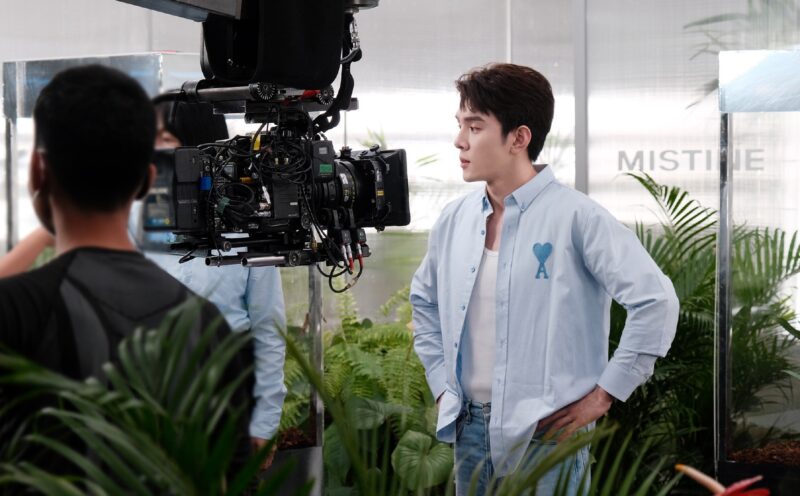Luxury fared far better than many other industries in 2023, a year hard hit by economic headwinds. But complacency is luxury brands’ worst enemy if they want to keep growing in China’s fast-changing consumer landscape. The latest China Luxury Report from Bain & Company predicts the sector will grow at a mid-single-digit rate in 2024 – lower than 2023’s 12% growth, which was boosted by a low base rate in 2022.
“The solid double-digit rebound is commendable, but China’s luxury market has not fully recovered to its 2021 levels,” one Bain analyst noted. There are still uncertainties hovering in the air around the recovery of consumer sentiment, which took a big hit in the second half of 2023.

To find out more about how luxury brands are faring in this climate and what their priorities are for the next chapter, Dao Insights spoke to Laura Pan, a leading academic in business management and co-author of Resilience of Luxury Companies in Times of Change (De Gruyter, 2021).
Laura Pan is a lecturer and researcher at SDA Bocconi School of Management in Milan, Italy. Her area of teaching is predominantly in international business strategies with a particular focus on the luxury industry, sustainability, and new technologies. Over the years, she has had the opportunity to live and work in various cities, including Melbourne, Hong Kong, Shanghai, Beijing, and Seoul. She grew up as an overseas Chinese in a predominantly Shanghainese household, an experience that has moulded her into a lifelong observer of the East-West cultural divide.
What is your personal favourite China luxury campaign you have seen recently and why?
Loewe’s Chinese New Year capsule collection. Over the last few years, Loewe has grown to become one of China’s most loved luxury brands, with a huge focus on craftsmanship and a strong ability to be innovative and respectful. Their jade collection aligns with all those values. Loewe has been one of the first luxury brands to have a clear and holistic view of Chinese craftsmanship, arts and culture, all of which are very important to the new Chinese consumer group.
LV has also grappled well with Chinese tradition. The dragon sculptures placed outside LV stores in 3 top-tier cities were very tastefully done – not only did they use the correct Chinese dragon to be represented, but importantly they are not afraid of coming across as “too Chinese”. I think many brands are so afraid of losing their brand identity that they retain a lot of their brand’s own elements, but a brand like LV, which is so strong in itself, has the luxury to go all out with honouring Chinese tradition and actually hit the mark.
I think brands like Fendi have missed the mark on this – the use of Pokémon [in their recent three-way collaboration with Japanese streetwear label FRGMT and Pokémon’s Dragonite IP] is very childish and cute, something Gucci had done under the guidance of former creative director Alessandro Michele. But I think there is a bit of collaboration fatigue in the luxury market, so it is not good enough to just choose a trendy brand partner – it can come across as though not a lot of thought was put into it. By contrast, Loewe’s campaign showed that they immersed themselves in Chinese culture and understood what means a lot to Chinese consumers.
For luxury brands there was a big focus this year on brand heritage and immersive exhibitions. Do you expect to see this change or continue in 2024? What new experiences can luxury brands bring to Chinese consumers in 2024?
According to the luxury report from Bain, which I also agree with, the new focus for luxury brands in China and Asia Pacific will be luxury branded experiences. Louis Vuitton is always considered a first mover in bringing new experiences to Chinese consumers, e.g. opening its first branded restaurant in Chengdu in 2022. While LV was not the first brand to do this in Asia, the brand has doubled down on this market, realising that Chinese consumers, in the long term, are shifting away from luxury goods and toward luxury-related experiences like fine dining, entertainment and exploration.
Luxury brands emphasised themed travel in 2023, for example Dior’s ice domes in Songhua Lake and LV’s beach club in Xiamen. I think a lot more of these kinds of activations will happen inside of China as opposed to trying to attract Chinese tourists to destinations outside of China. We are witnessing Harbin enjoy an unprecedented degree of popularity right now as Chinese consumers’ appetite for domestic travel goes through the roof. I think we will see luxury brands supporting domestic Chinese tourism by creating more resort pop-ups in locations such as this.
Does the continuing trend of rational consumption pose a threat to the luxury market in China?
After the financial struggles that China suffered in 2023, I think there is a shift in spending mentality, but only for the middle and upper middle classes. Those are the ones who are most affected. As a result, we will see luxury brands place more emphasis on high-value customers and Ultra-High-Net-Worth Individuals, who will not change their consumption behaviour.
In most cases, luxury brands follow the Pareto Principle; 80% of revenue comes from 20% of customers. Or more realistically, we will see a ratio of about 85/15. In terms of the demographic, not much will change for the high-value customers, but rational consumption will definitely impact the high-volume, low-value segment of products, like sunglasses, wallets, earrings, and other accessories. Sales of these entry-level priced goods will decrease significantly.
We hear a lot about the fact that Chinese Gen Z consumers care a lot about brands’ social responsibility and sustainability. Is this reflected in their consumption patterns on the ground?
I want to clarify that there is a fine line between social responsibility and sustainability. In my opinion, Chinese Gen Z talk about their values very openly, but they do not practice those values themselves yet. Consumers are told sustainability is important, but they often don’t know enough to determine if a product is sustainable or not – this is not just a China issue, this is worldwide. Chinese consumers tend to feel that the responsibility to be sustainable falls on the company, rather than themselves. So I think there is still a lot of work needed for Chinese consumers to understand what sustainable behaviour would look like.
Social responsibility, on the other hand, IS really important to Chinese consumers. I think they care a lot about respect – they’re waking up to the fact that the West treats them differently and they don’t like that. Consumer attitudes closely mirror the geopolitical narrative. The tone of voice the Western media has towards China is very negative, which leads China to assume the role of the victim who needs to “retaliate” in defence. Similarly, consumers feel they should retaliate in some way if brands do not show respect for China. So if brands do not try to align with Chinese values or try to be supportive of China, they find themselves in a difficult situation.
What role does blockchain technology have in helping luxury become more sustainable?
The European Commission is gearing up to pass a law soon that would give every single product a digital product passport (DPP) that contains information about the lifecycle of the product, like the composition of raw materials, where it was manufactured, its point of sale, and any transfers of ownership. At every single point of interaction, information about the product lifecycle is entered into a ledger (the blockchain), and this data can’t be retroactively changed on the backend, making it incredibly reliable.
The biggest luxury conglomerates are also now part of the Aura Blockchain Consortium, which is trying to encourage luxury brands to convert all labelling into digital product passports. This would provide consumers with better transparency over product provenance (i.e. a product’s origin and movement through the supply chain). The other benefit of this is in ownership transference. When luxury products are resold on the second-hand luxury market, the current owner can prove the authenticity of the product to prospective buyers. This is something they’re trialling in the EU, but we don’t know yet whether they are going to execute this in China.
Finally, what are your key predictions for luxury in China in 2024?
- I think luxury brands will double down on guochao. Brands will follow Loewe’s example and get smarter about catering to Chinese consumers by demonstrating deep cultural understanding.
- More luxury brands will be venturing into luxury branded experiences e.g., restaurants and entertainment. This is what most of the upper middle class will be spending their money on. I am interested to see how brands incorporate entertainment, as we have seen restaurants and resorts, but not a lot of case studies for luxury branded entertainment yet.
- We are going to see at least one luxury brand incorporate Northeastern floral print [东北大花, a pattern splashed across Chinese social media recently with the rise of Dongbei Renaissance]…I hope!









